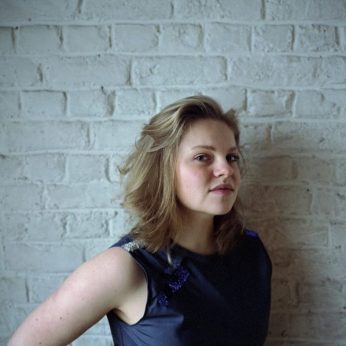Composer: Johann Sebastian Bach (b. 1685 - d. 1750)
Performance date: 25/06/2022
Venue: St. Brendan’s Church
Composition Year: 1720
Duration: 00:24:26
Recording Engineer: Jason Fallon, Ergodos
Instrumentation: vn
Instrumentation Category:Solo
Artists:
Diamanda Dramm -
[Violin]

Johann Sebastian Bach [1685-1750]
Partita No.2 in D minor BWV 1004 [1720]
1. Allemanda
2. Corrente
3. Sarabanda
4. Giga
5. Ciaccona
The Chaconne is the most wonderful, unfathomable piece of music. On one stave, for a small instrument, the man writes a whole world of the deepest thoughts and most powerful feelings. If I imagined that I could have created, even conceived the piece, I am quite certain that the excess of excitement and earth shattering experience would have driven me out of my mind.
Johannes Brahms
Bach’s most important instrumental works were written during his six years at Cöthen 1717-1723, where he was Kapellmeister for the musical Prince Leopold Anhalt-Cöthen. For a brief time Cöthen put Bach in a musically ideal situation. First he was working with an ensemble whose professional core group comprised some of the finest musicians in that part of the world. Secondly the demands of his job left him considerable time to pursue his own interests. Thirdly and most importantly he found himself under the patronage of a supportive and understanding prince.
Bach’s time at Cöthen was marred by the sudden death of his first wife, Maria Barbara, in 1720. Bach’s autograph manuscript of the sonatas and partitas is also dated 1720 and the extraordinary nature of the famous Chaconne has led to conjecture that it was written in memory of his wife.
The D minor Partita presents the dances in their traditional sequence of Allemande, Courante, Sarabande and Gigue. The Chaconne is placed last and the perhaps unintentional effect is to make the preceding dances as a whole appear as a prelude. The Chaconne is a special type of continuous theme and 31 variations where a somewhat short subject is relentlessly repeated and varied. The variations are built on a descending ground bass to the rhythm of a slow dance similar to the Sarabande in simple triple time and often in a minor key. All of Bach´s genius and musical mastery are found in the Chaconne and it inspires all manner of superlatives. Certainly when listening to this music it is sometimes hard to believe what you are hearing, your mind keeps saying that this cannot be possible. Philipp Spitta, the great Bach scholar summed it up quite simply as a triumph of spirit over matter.
Francis Humphrys
Copyright © 2024 West Cork Music. All rights reserved.
Designed and developed by Matrix Internet